Reverse osmosis systems can be a great investment for farmers. Reverse osmosis (RO) filters separate water molecules from other dissolved solids in the water (like carbonates). Since carbonates act as a buffer, they can make pH management difficult.
The reverse osmosis system in this video is a large system for a fairly large greenhouse, but the principles used are the same as smaller filters.
Basically, the reverse osmosis filter is a membrane through which water is pumped, filtering water at a molecular level. Most dissolved solids can’t get through the membrane. This means that the water coming out of the filter is much closer to pure water.
When to use a reverse osmosis system
Reverse osmosis filters are the most reliable solution to correct bad source water quality. The primary culprits of low source water quality for hydroponics or aquaponics are carbonates.
Carbonates act as a buffer. This means that they dissolve into and precipitate out of a solution within a pH range of about 7.5–10.
Unfortunately, carbonates are also basic; when they dissolve (or “precipitate”), they raise the pH of the solution. This makes lowering pH more difficult for growers.
Having a high ppm of salts (they will mostly be carbonates) in your source water to start also interferes with the nutrients you are able to add to the solution.
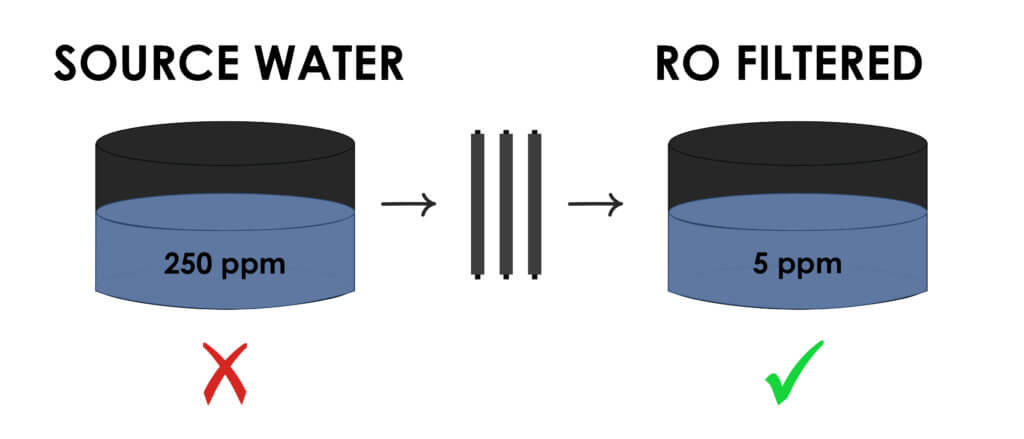
Source water quality becomes a problem at 200 or 250 ppm. This means that if your source water has a ppm value over 200, you’ll want to think about a reverse osmosis system. If the ppm value is over 250, it’s definitely worth getting one. (This value can be measured with an EC/TDS meter. Just be sure to convert the units!)
A commercial-sized filter might be overkill for a small farm
The system in this video is very large. For smaller farmers, there are many smaller RO units that will work fine for you.
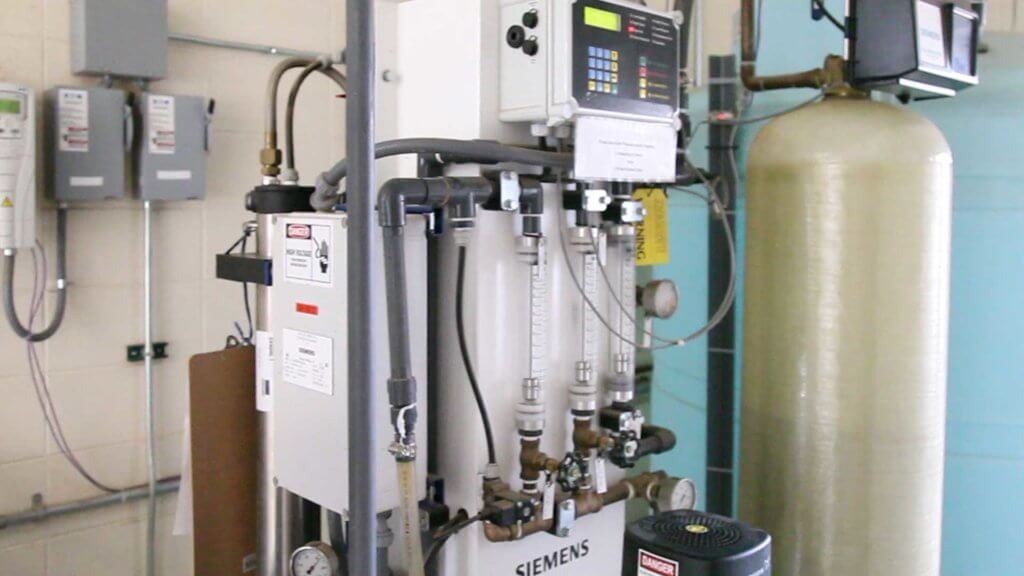
How a reverse osmosis filter works—molecular filtration
This commercial-scale Siemens’ system has multiple levels of filtration to increase efficiency. Water travels through a series of filters before the pure water is finally sent to a holding tank:
1) Source water enters the system and goes through a pre-filter and a sand filter. This sorts out the large solids so that they don’t block the finer filters.
2) After being filtered for large particles, the water goes through a third filter before being sent to the RO pump.
3) The RO pump runs the water to the actual osmosis filters. The water reaches the osmosis membranes in the filter and is filtered on a molecular level.
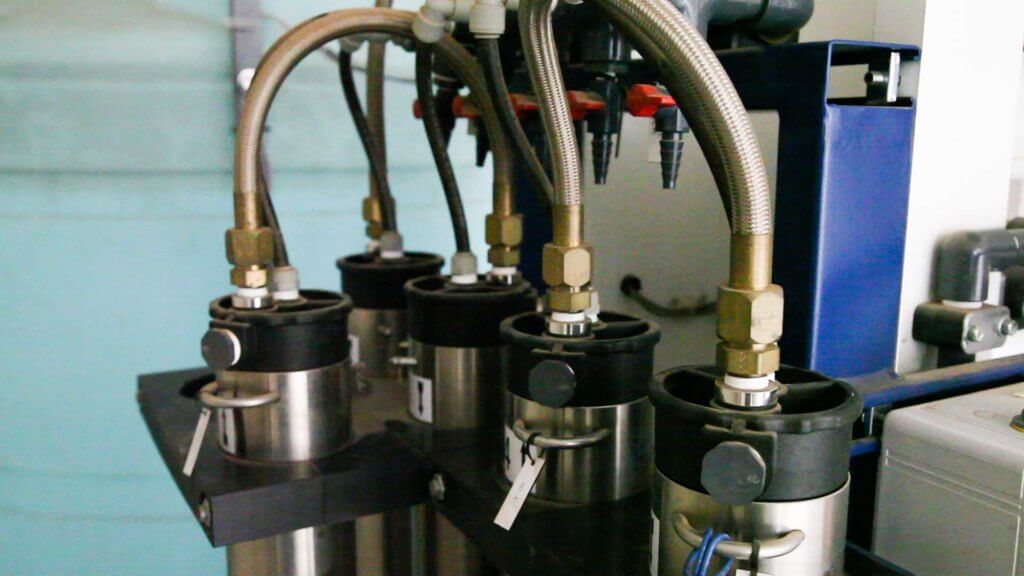
4) Each filter then sends the water into a large holding tank. The system runs constantly and tops off the holding tank, which is used according to demand.
Pssst… learn more about filtering water for a smaller farm with a filtration manifold.
3 operating tasks for reverse osmosis systems
The main tasks associated with a reverse osmosis system are:
1. Backflushing filters: Most filters in this system have a backflushing function. Backflushing removes the “gunk” that builds up on the filter, increasing flow and filter lifetime. Here’s how you might backflush a canister or Y-filter, for example.
2. Replacing the RO membrane: Membranes can get worn out and efficiency can drop. Check with the filter manufacturer to see their recommended replacement intervals.
3. Scheduled checks and records: Keep a maintenance sheet to track the efficiency of the pump. For instance, one maintenance entry might have the incoming source water at 433 ppm, and the filtered water at 5.8 ppm.
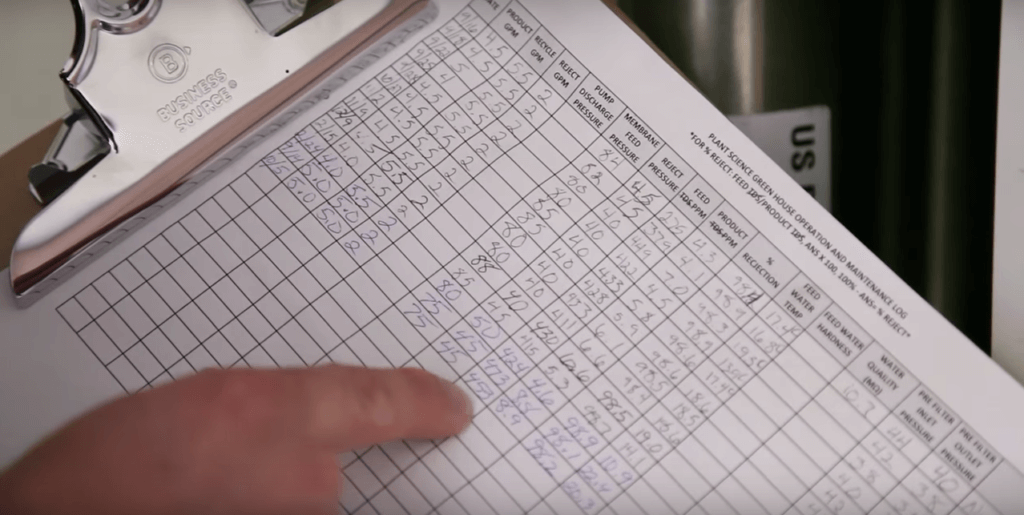
Setting up a farm? Plan the right way
Hydroponic management is a learning curve—make the most of it with good learning resources!
We know that starting a farm comes with a long list of “to do’s” and “to learn’s”. Slogging through forums, Youtube playlists, and articles scattered throughout the web can be a huge time suck. To make things worse, you never know which tips to follow and which advice you can trust.
Upstart University solves that problem.
Through Upstart U, students anywhere in the world can learn: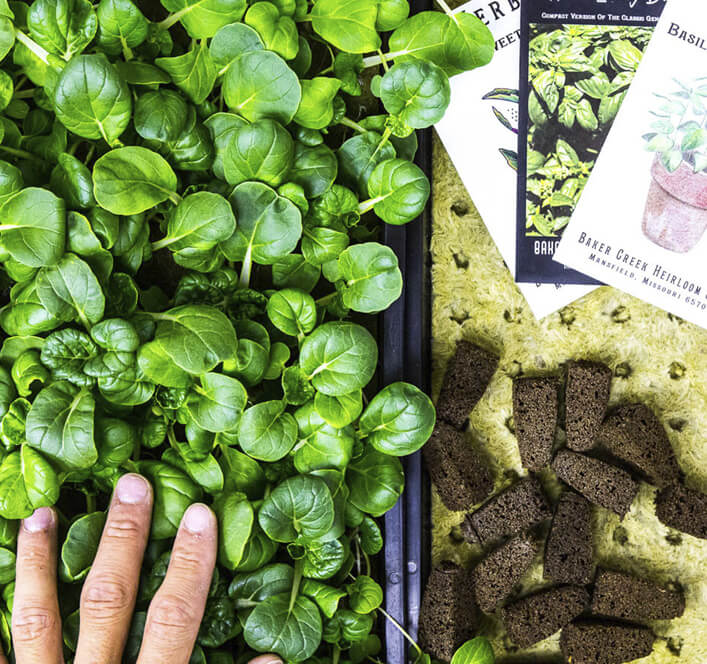
- How to plan a business
- How to find their markets
- How to design and build a farm
- How to manage hydroponic or aquaponic systems
- How to wisely grow their business
On top of that, Upstart U students get one-on-one attention if they want it, and join a community of like-minded farmers.

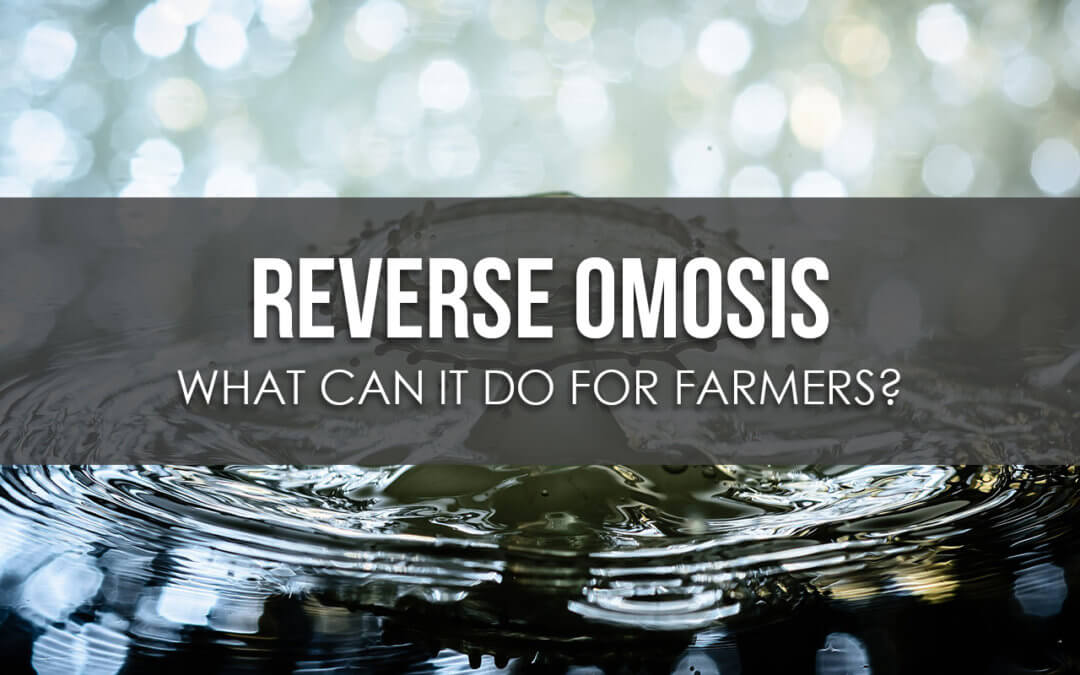

Purifying water in an economic way is one of the most salient features of a Reverse Osmosis System that and it is being used both domestically and industrially across the globe to great effect.It’s really works, Nice Article…Thanks for sharing with us.
Just wanted to say I love reading your blog and look forward to all your posts! Keep up the fantastic work!
It’s actually a great and useful piece of info.
I’m happy that you just shared this helpful info with us.
Please keep us informed like this. Thanks for sharing.
I am looking for ag-field-edge RO units for cleaning the nitrates out of the water flowing from 4-8″ buried field tiles – as it comes out of the field. My ideal would be a unit that could be housed (for winter weather, I’m in Ames, Iowa) and tolerating non-contiuous flow of water to be used only in spring or as heavy rains develop. My ideal would have a solar collector on the roof of the housing shed, so it could be left in a remote location “off-the-grid.” Nitrate (or other pollutants) runoff occurs in ag fields everywhere, so this could be a new profit-center for a manufacturer – although will probably have several years lead time for a market develops, unless government regulations step and speed the process from voluntary to involuntary water-cleaning for farmers everywhere (or anywhere). I am getting information to submit to an Iowa legislator. If you don’t know of any such units manufactured currently (I can’t find any myself.) could you help me find connections to innovative manufacturer(s) who might consider such a project? Thank you.
A major reason for the growing demand for reverse osmosis (RO) systems is the growing cases of water-borne diseases across various countries, especially low-income countries.
I had no idea that the majority of reverse osmosis systems have backflushing capabilities that prevent your filter from becoming obstructed. My brother is thinking about starting a farm on the property he inherited from our late uncle last month, and he needs to find a way to help prevent his water from collecting debris and infecting his crops. I think he should consider finding some equipment that will help him maintain his farm.